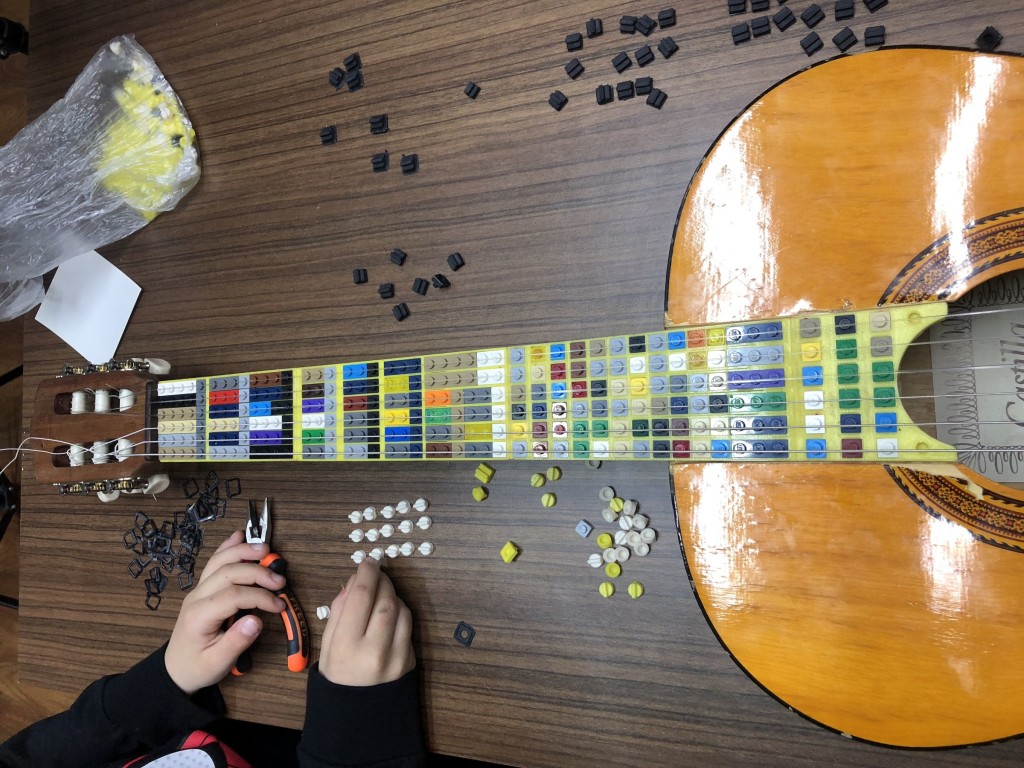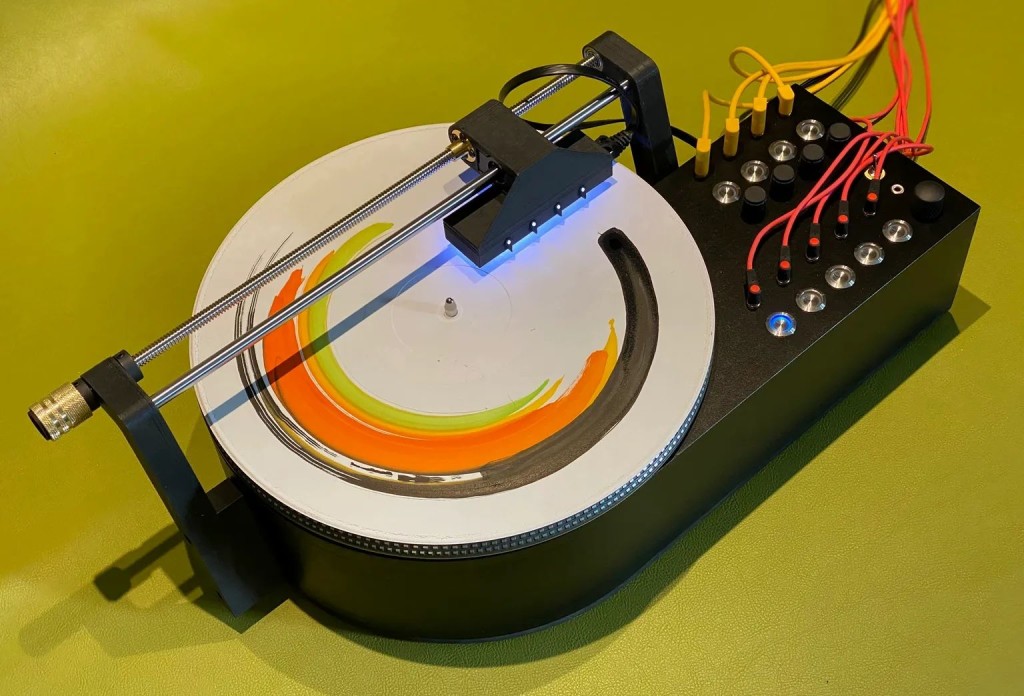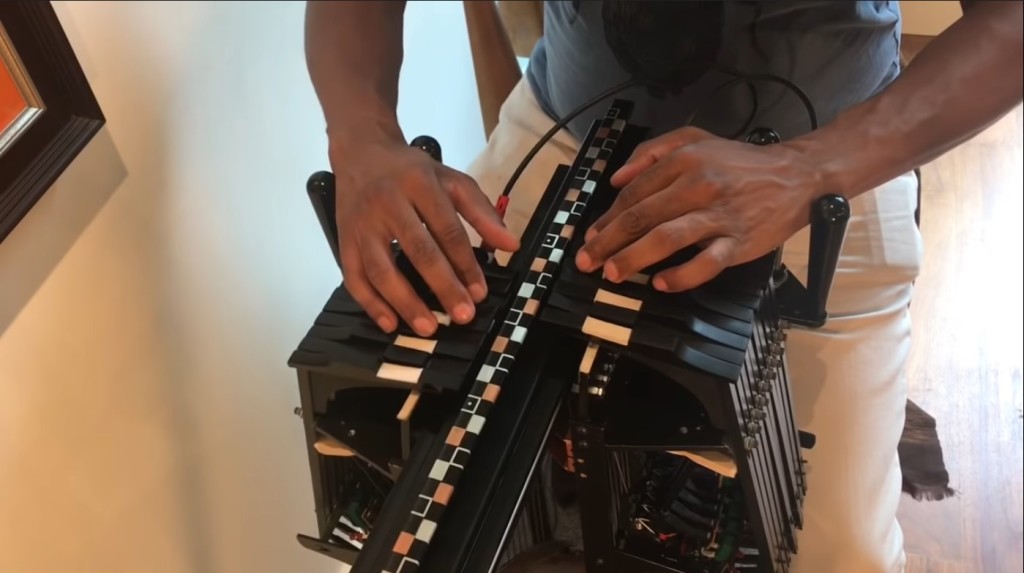Bored by the Grammys? Try the Guthmans instead. The Guthman Musical Instrument Competition has selected its award winners, as musicians re-imagine acoustic, electroacoustic, electromagnetic, and digital all at once, with phenomenal results.
Winners were announced on Saturday with a virtual fair produced by Georgia Tech and Cycling ’74. Those selections are accompanied by meticulously produced videos explaining the concepts and how they were developed, plus – in something you rarely get in a world flooded with demo videos, some detailed expert commentary by the judges talking about what sets these projects apart.
And about those judges – this year, they included none other than legendary synth inventor Dave Smith (of Sequential and, uh, MIDI fame), the inimitable transcdisciplinary all-round genius DJ Spooky, guitarist/composer superstar Kaki King, and rooting all of this deeply in history, musical instrument curator Jayson Kerr Dobney of The Metropolitan Museum in NYC.
So take a personal tour of these instruments and the imagination behind them, one by one.
A microtonal guitar, made by father and son from LEGO
Atlas Çoğulu, Tolgahan Çoğulu, and Ruşen Can Acet, with Selçuk Keser of Öğrenenler Workshop
People’s Choice

We’ve talked a lot lately about digital tuning. Here’s a physical equivalent, rendered it LEGO-compatible bricks. A father and son led this team to rethink guitar frets as interchangeable, with 3D printed blocks you can use to product your own tuning options. (That is, this is physically digital, if you like. We need another name for this, as the LEGO company still owns the brand, but the patents have expired.)
It’s also beautiful that this is a player-luthier collaboration, as well as an intergenerational one. But it began with the guy’s kid hitting on the idea of trying to reproduce the fretboard with his LEGO toy blocks.
Now, we’ve been avoiding the use of the term “microtonal” as implying that other tunings subdivide the western, equal-tempered scale. But here, maybe it fits – in that you can reconfigure this in blocks, and the blocks are quantized at a level smaller than an individual scalar difference. I just want to see someone make a capo out of little LEGO heads, but maybe I’m weird and that’s macabre.
I’m curious to see if this is something we can go try. Stay tuned. Erm… sorry.
Electromagnetic piano – freed from hammers
David Shea, Monica Lim, and Mirza Ceyzar
Third Place

There’s a trend it seems this year toward hybrids – making some connection of future and history. So it’s fitting that the third place this year went to the Electromagnetic Piano.
The idea is simple, but with rich potential – use magnets to resonate strings without contact, thus opening up the possible of hanging sustains, resonance, and activation of the instrument outside just the conventional key/hammer mechanical mechanism. As with prepared piano or even shouting at the strings with the pedal down, it’s a reminder of the depths of sound possible in the piano as a sonic world.
This project comes from David Shea, Monica Lim, and Mirza Ceyzar of Melbourne. But I immediately thought of Andrew McPherson’s Magnetic Resonator Piano project in London. That instrument now has a repertory for it, and I also see that the brilliant performance I got to see at Cafe Oto by composer Xenia Pestova is online – Mvt. I; Mvt. II; Mvt. IV.
That’s a good sign – maybe this is an idea that is catching on, along with the larger body of works for augmented piano (piano with some kind of additional electronics or instrumental modification).
Crucially, the Shea/Lim/Ceyzar project is portable, all-in-one, and can be added to a piano directly. The bar-style form factor makes me think of the Moog Piano Bar, an ingenious but ultra-limited collaboration between Bob Moog and Don Buchla.
With so many pianos in the world, but a design that has gone largely untouched since the late 1800s, it seems this idea is coming at a perfect moment.
A painterly, turntable-style graphical synth
Brian Alexander
Second Place

Visual synthesis has a history older even than modern sound synthesis, but it often is left at the sidelines. This artistic creation is almost sculptural in quality – a turntable that translates graphics into sound, via four-channel color optical detection.
A keyed string instrument, reimagined by a cellist, with frets and slides
Clark Battle
Georgia Tech Faculty Favorite

This is perhaps the most original idea here – a from-scratch new instrumental invention unlike anything I’ve quite seen before. Clark Battle’s Evolano was informed by his experience as a cellist, but merges the advantages of keys with the flexibility of frets and sliding pitch – and it has two sets of key manuals. Oh yeah, plus pickups. It’s everything you love about almost every pitched instrument in one.
It’s just really wild, basically, and has to be seen to be understood. I see why it won the faculty favorite.
Deconstructed marching band instruments and a War Tuba
Steve Parker
One last special mention before the winner – The War Tuba is an installation of deconstructed marching band instruments, plus a giant wearable tuba derivative modeled on acoustic locators of the 1930s. (Basically, those contraptions invert the operation of that horn – instead of amplifying a sound from the instrument into the outside world, they take the sound of the outside world and amplify it for your ear.)
Acoustic weaponry is a topic that has never gone away, but has received renewed interest of late. It’s worth also checking out the research and artwork of Nik Nowak here in Berlin – made doubly notorious because his sonic Panzer has made appearances around town, including at the legendary Superbooth.
1st prize: Segulharpa, electromagnetic-acoustic stringed Icelandic creation

Ulfur Hansson
First Place
If this year’s theme had a lot to do with timeless hybridity, then the Segulharpa is a perfect first place embodiment of that zeitgeist. The Segulharpa is unmistakable in its beautiful, esoteric-looking circular wooden form. But the touchplates ringing the bottom of the instrument activate 25 strings inside with electromagnets. After nearly seven years of work, creator Ulfur Hansson found an arrangement that produces beautiful resonances and unexpected transcendent sonic moments.
Here he is years ago talking about this idea – and specifically the deeper notions of resonance and vibration. Maybe it’s that notion of sound that’s most important, rather than the abstracted idea of sound through speakers – particularly now, in a year in which we’ve been to varying degrees trapped in the virtual. This is a way of engaging in electronic (and digital) sound that opens our minds and ears again to how it is embodied.
Still more
For more on the winners, plus a bunch of additional projects that came out of the Moog Hackathon last month, see the official Georgia Tech site:
https://guthman.gatech.edu/winners
That includes for instance the Magnebacus, an electrical instrument project by Mohammad Jafari, Daniel Ethridge, and Sophia Mahdizadeh:
There’s also a great write-up at The New York Times: